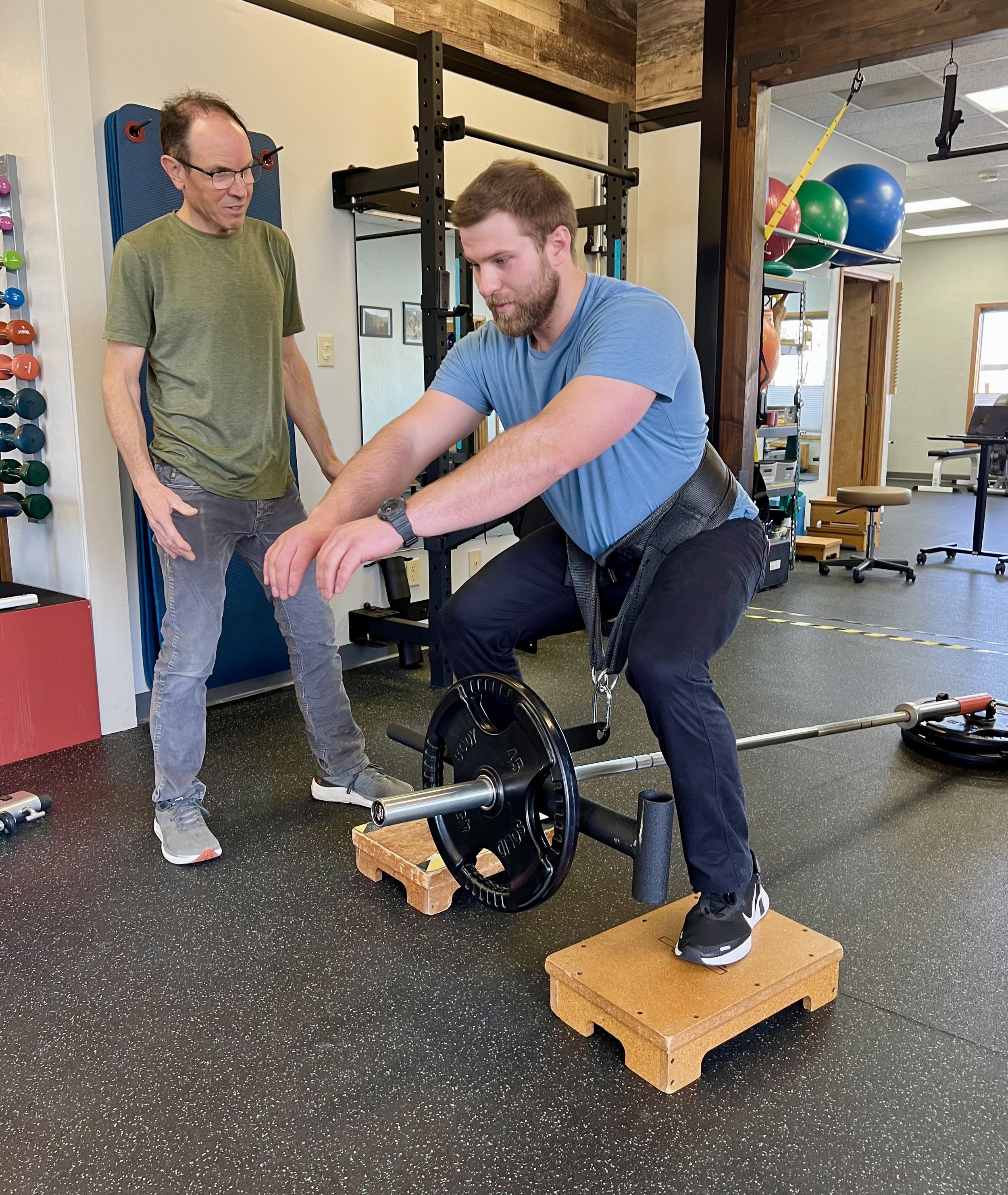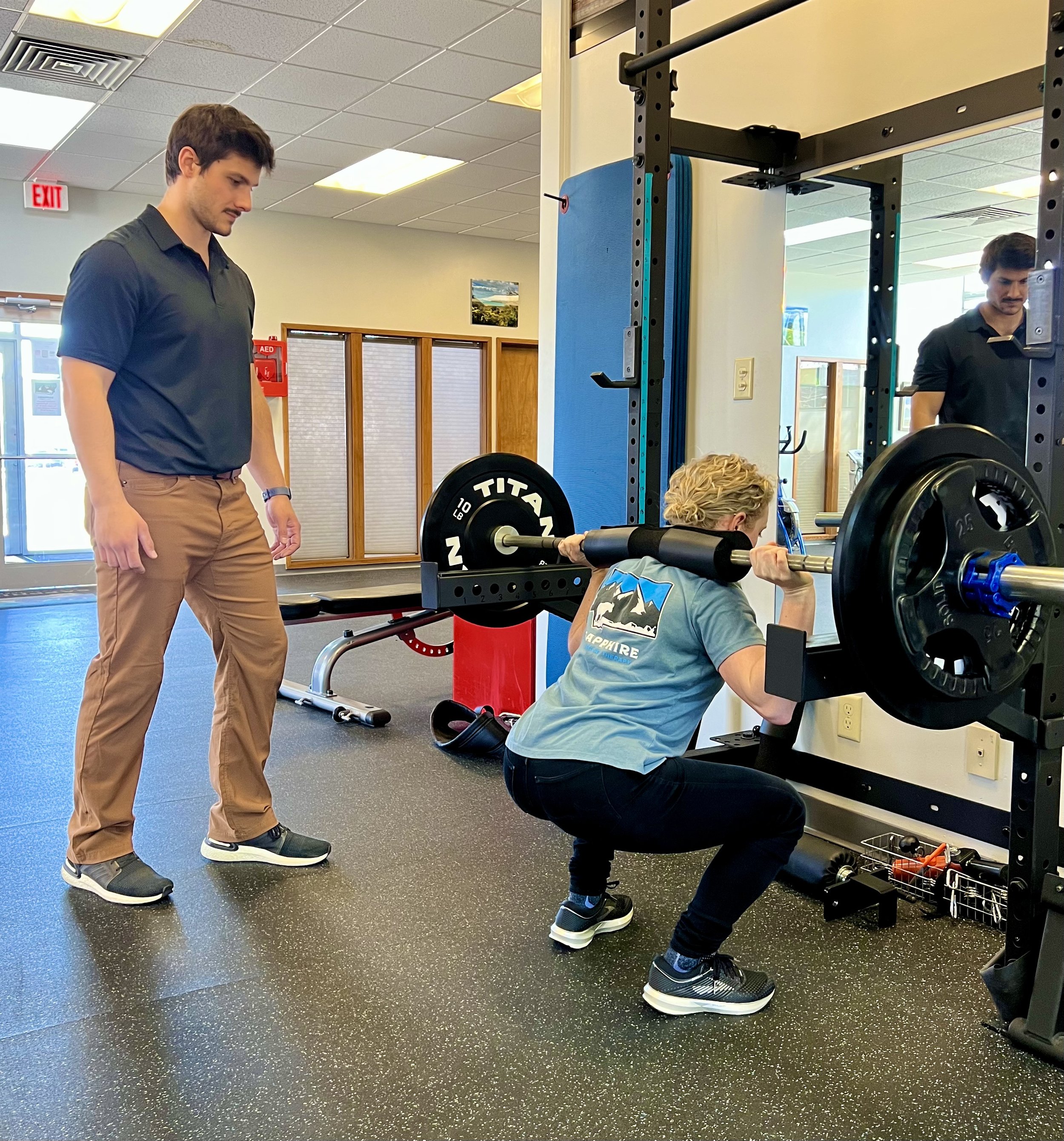Why Muscle Strength and Power are Important for Fall Prevention
According to the CDC, one out of every four older individuals (those 65 years or above) experience a fall each year. Also, those who have sustained a fall once are twice as likely to fall again. When having a discussion about falling it is important to note that a fall does not necessarily mean ‘falling to the ground’. A fall can be any unexpected change in body position that results in unplanned contact with the ground or lower surface (1). This could be as simple as a stumble that results in someone catching themselves against a wall or countertop. Over time, this unsteadiness on our feet can result in more severe falls and ultimately, injuries that could potentially be fatal. And while the effects and costs of falls is well documented, the causes remain a bit more unclear.
Falls can occur for a multitude of reasons. They can happen due to unforeseen objects tripping us, weakness in our leg muscles, poor balance, poor vision, or medications. Given there can be multiple factors, it is important to address each one as part of the whole picture to better prepare us to prevent falls. The aim of this post is to shed light on how we can improve our fall risk prevention through the implementation of some basic exercise principles.
Any fall prevention program should address an individual’s lower extremity strength. This is because as we age our bodies naturally lose muscle mass in a process called sarcopenia. With weaker muscles in our lower body, we are exposed to an increased risk of falling due to decreased strength. One tool to help prevent this loss in muscle mass is to perform strengthening exercises to help build up our muscles to better support us during our daily activities. This brings us to our topic of interest. How do we effectively train our muscles through exercise to make an important impact on our ability to prevent falls?
Strength training can take on many shapes and forms, but at its core, strength training should be an attempt to place enough stress on the body’s muscles to elicit them to. In the world of strength and conditioning, this typically looks like performing 3-4 sets of 3-5 repetitions with high load, ie. a leg press or a weighted squat. The key here is the exercise must be challenging, which can vary widely between individuals. What someone in their 30’s can do is much different than what they can do in their 70’s but this emphasis on developing strength remains relevant throughout the aging process. Dr. Claire Minshull, a Rehabilitation & Conditioning Specialist, recommends that each major muscle group should endure 25-45 repetitions a week of heavy, resistance training (2).
Once, individuals have been able to safely and effectively improve their strength it is important not to stop there. Another key factor to consider as we age is our ability for our brain and muscles to communicate quickly decreases (3). This becomes even more important when addressing our fall risk prevention. Our ability to produce force quickly falls into a category of exercise known as power training. For example, rising from a chair takes a certain amount of strength but the speed at which we come out of the chair takes into consideration our muscle’s ability to produce power. This is important when considering falls because they can happen in a fraction of a second. Therefore, our ability to produce force quickly can be the difference between catching ourselves or falling to the ground (4).
Taking this next step toward working on developing muscle power luckily does not have to uproot everything that was done to work on strength. We can actually take these same exercises we did for strengthening (ie. squats, step-ups, etc) and use them as our power exercises. The key when doing exercises for the purpose of power development is to do them with fast intentions. Take our rise from the chair example, instead of doing a sit-to-stand with weight to increase our strength, we would do them for speed to help develop our power.
Falling can be a traumatic event for individuals in our community. A fall can cause lasting physical and psychological effects that impact not only those who have sustained a fall but those close to them as well. If you are concerned about your fall risk and are interested in engaging in a fall prevention program, contact Sapphire PT for further evaluation.
By Andrew Traver, PT, DPT
References:
1) CDC. “Facts about Falls.” Www.cdc.gov, 6 Aug. 2021, www.cdc.gov/falls/facts.html.
2) Minshull, Claire. “The Practice-Changing Principles of Strength & Conditioning for Physios.” Physio Network, www.physio-network.com/masterclass/the-practice-changing-principles-of-strength-conditioning-for-physios/. Accessed 6 Nov. 2023.
3) Simpkins, Caroline, and Feng Yang. “Muscle Power Is More Important than Strength in Preventing Falls in Community-Dwelling Older Adults.” Journal of Biomechanics, vol. 134, Mar. 2022, p. 111018, https://doi.org/10.1016/j.jbiomech.2022.111018.
4) “Muscle Power, Not Strength, Key to Fall Prevention.” Physio Network, www.physio-network.com/research-reviews/other/muscle-power-is-more-important-than-strength-in-preventing-falls-in-community-dwelling-older-adults/.


